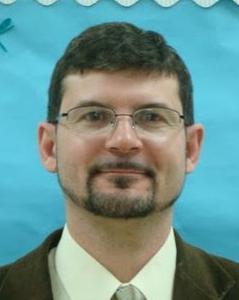| The 2010 Census and the Undergraduate Classroom |
![PDF-NOTE: Internet Explorer Users, right click the PDF Icon and choose [save target as] if you are experiencing problems with clicking.](http://rsnonline.org/templates/rsntemplate-smallmasthead/images/pdf_button.png) |
 |
|
Page 1 of 3 Philip Wingeier-Rayo, Pfeiffer University
Hispanics/Latinos in Higher Education, By the NumbersThe results of the 2010 Census are out, with some expected demographic trends increasing and some other surprises cropping up. As expected, the United States continues to become more ethnically diverse, with Hispanics/Latinos in particular increasing to 50.5 million, or 16 percent of the population. It is also not very surprising that Hispanics/Latinos accounted for more than half of the growth of the United States between 2000 and 2010. This growth is greatest among persons of Mexican descent, who increased from 20.6 million to 31.8 million. What is surprising about this, however, is that for the first time births surpassed immigration growth in the Mexican-American community. This is due to higher birth rates among Hispanics/Latinos and a generally younger population (see www.pewhispanic.org). Another surprise is that the greatest growth of Hispanics has been in states that have not historically had a strong Hispanic/Latino presence. For example, South Carolina, Alabama, Tennessee, Kentucky, and North Carolina all experienced more than a 100 percent growth in the last decade. As a teacher at a small liberal arts college in one of these states, I can’t help but wonder how these demographic shifts will influence teaching in my classroom. Although enrollment figures reveal that there are greater numbers of Hispanic/Latinos going to college, the overall percentage of these students pursuing higher education is still quite low. The Educational Attainment Parity Indicator (EAPI) is a tool to measure the actual number of adults with a BA relative to a minority’s population. According to the EAPI, minority education attainment increased from 1960 to 1980, but has declined since then. In the book Higher Education and the Color Line: College Access, Racial Equity, and Social Change (Harvard Education Press, 2005), the authors examine many areas that influence educational opportunities for ethnic minorities in America today, such as admissions, financial aid, retention, and job placement. A chapter by Michael Kurlaender and Stella Flores confirms the disparity gap that I also see in my classroom. While 16 percent of Whites obtain their BA, only 5 percent of Hispanics do so. This statistic becomes even more troublesome when coupled with the fact that the earnings differential between college and high school graduates is at an all-time high (65 percent). A chapter by David Karen and Kevin J. Dougherty points out the importance of higher education as a passport to middle-class success and the democratization of society. I think all of us who have chosen the vocation of university teaching know this in our gut, which is part of what motivates us in this profession. A basic factor that keeps many Hispanics, as well as people from lower socioeconomic backgrounds, away from college is the cost of tuition. Every year tuition gets more expensive and the budget crisis has caused a financial aid shift from Pell Grants to student loans. For example, in 1979–1980, a low-income family would have spent 1/5 of its income to pay for college after financial aid; in 2001–2002, the same family would have to spend 37 percent of its income. There is also growing criticism (and even questioning) of the value associated with the cost of a college degree. This question was examined, in part, in the study by Richard Arum and Josipa Roksa, highlighting the underwhelming educational gains of a four-year college experience. Given the high cost of a college degree, the perceived barriers to enroll, and the questions around the value, it is no wonder that I have yet to see the impact of the 2010 Census report in my classroom at a four-year private college. In fact, my institution saw a decrease in the Hispanic/Latino enrollment from 2009 to 2010 from 4 percent of the student body to 2 percent. This decrease is heightened by the increase of this population group in the state and region, leading me to ask if other similar institutions are experiencing the same trend. Without any statistics to back it up, my hunch would be that a good percentage of college-bound Hispanics in my region of the country are going the community college route. Nevertheless, given the dramatic growth of the Hispanic/Latino population that the 2010 Census reveals (especially among young people), I ask, “What can my institution and I, as a teacher, do differently to make Hispanics and other ethnic minorities more welcome?” |


 Philip Wingeier-Rayo is associate professor of religion at Pfeiffer University, where he teaches in the areas of theology, missions, and cultural anthropology. He is the author of Cuban Methodism: The Untold Story of Survival and Revival (Dolphins and Orchids, 2006) and Where Are the Poor: An Ethnographic Study of Base Christian Communities and Pentecostalism in Cuernavaca, Mexico (Wipf and Stock, 2011).
Philip Wingeier-Rayo is associate professor of religion at Pfeiffer University, where he teaches in the areas of theology, missions, and cultural anthropology. He is the author of Cuban Methodism: The Untold Story of Survival and Revival (Dolphins and Orchids, 2006) and Where Are the Poor: An Ethnographic Study of Base Christian Communities and Pentecostalism in Cuernavaca, Mexico (Wipf and Stock, 2011).